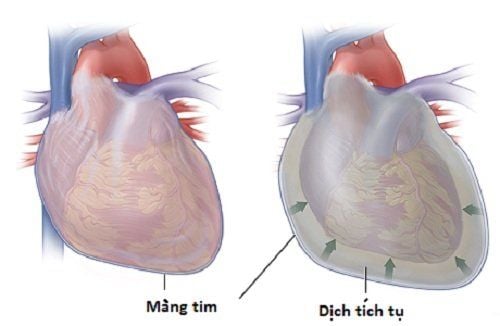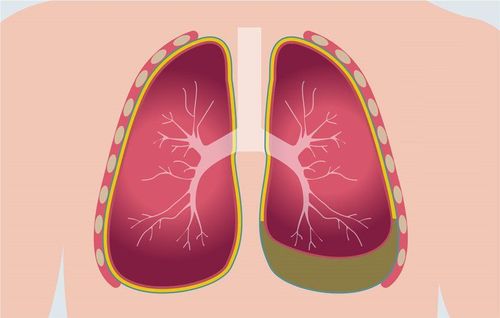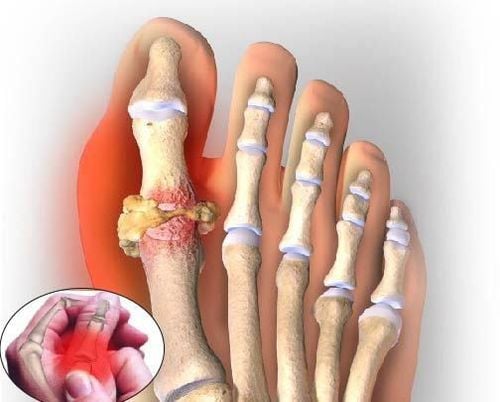This is an automatically translated article.
Rheumatic heart disease can lead to complications of heart valve stenosis, heart valve regurgitation or even death if not detected and treated promptly. Early diagnosis of rheumatic heart disease, according to the given criteria, is the solution to minimize the risk of dangerous complications of the disease.
1. What is low heart rate?
Acute Rheumatic Fever (ARF), also known as rheumatic fever, acute rheumatic disease, occurs after infection with group A beta hemolytic streptococcus (Beta hemolytic Group A Streptococcus) in the throat, mouth. Within 2-3 weeks after having pharyngitis caused by group A beta-hemolytic streptococci, if not treated promptly and properly, the disease can progress to rheumatic fever. This is the main cause of acquired heart disease in children between the ages of 5 and 15, with the same prevalence in men and women.
In addition to damage to the heart, rheumatic heart disease also damages the joints, connective tissue under the skin or even the brain. In the heart, rheumatic fever can leave long-term consequences such as inflammation of the heart, thickening of the heart valves, long-term leading to heart valve damage, heart failure, arrhythmia, even stroke and death.

Thấp tim gây ra nhiều ảnh hưởng nghiêm trọng tới sức khỏe người bệnh
2. Diagnostic criteria for rheumatic heart disease
Diagnosis of rheumatic heart disease was based on Jones' criteria, adjusted in 1992, including:2 major criteria plus evidence of group A beta-hemolytic streptococci infection; 1 major and 2 additional minor criteria have evidence of group A beta-hemolytic streptococci infection. Diagnostic criteria include:
2.1 Major criteria
Heart inflammation: Found in 41-83% of patients rheumatic heart disease with clinical manifestations is tachycardia, arrhythmia, mitral valve regurgitation or aortic regurgitation, myocarditis, pericarditis, heart failure,...; Arthritis: Found in 80% of patients with rheumatic heart disease. This is a very important symptom in the diagnosis of the disease, but it is not a completely specific symptom. Symptoms of the disease are swelling, heat, redness, and pain in the joints moving: when one joint heals, the other begins to swell, leaving no sequelae in the joint; Sydenham's chorea: A movement disorder with aimless and involuntary movement; Subcutaneous nodules: 0.5 - 2cm in diameter each, raised under the skin, painless, freely mobile, can grow alone or in clusters, often distributed near large joints such as joints pillow; Erythema ring: These are non-necrotic, pale-colored erythema, usually appearing on trunk, inner extremities and never face, usually disappearing after a few days. 2.2 Sub-criteria
Mild fever or high fever; Joint pain: Pain in one or more joints but not enough of the typical symptoms of arthritis; Serum C-reactive protein is elevated; Elevated erythrocyte sedimentation rate; Observed prolonged PQ segment on electrocardiogram. 2.3 Evidence of group A beta streptococcal infection
Throat culture may reveal strep or a rapid strep antigen test is positive; Increased blood levels of streptococcal antibodies (ASLO response > 310 Todd units). Note: Special case of diagnostic criteria:
Chorea: Defined as rheumatic; Adults with rheumatic heart disease; The patient had a history of rheumatic heart disease, 2 minor criteria, and additional evidence of group A beta-hemolytic streptococci infection.

Nhiễm liên cầu khuẩn beta nhóm A là nguy cơ gây bệnh thấp tim
3. Differential diagnosis of rheumatic heart disease with other diseases
Diseases with fever and joint pain: Juvenile rheumatoid arthritis, septic arthritis (pyogenic, tuberculosis, viral), post-dysenteric or typhoid reactive arthritis, allergic arthritis, sepsis, blood disease malignancy, bone cancer, growth pain,...; Symptomatic heart diseases: Viral pericarditis or viral myocarditis; Symptomatic diseases of the joints and heart: Infective endocarditis and Lyme disease; Disease with symptoms of dancing: Huntington's dance and Gille de la Tourette convulsions. With these diseases, testing for evidence of group A beta-hemolytic streptococcal infection will be negative.
Based on diagnostic criteria for rheumatic heart disease, doctors can diagnose whether a person has the disease or not to provide an effective treatment plan, helping to avoid the risk of unwanted complications. due to delay in treatment.
Please dial HOTLINE for more information or register for an appointment HERE. Download MyVinmec app to make appointments faster and to manage your bookings easily.













